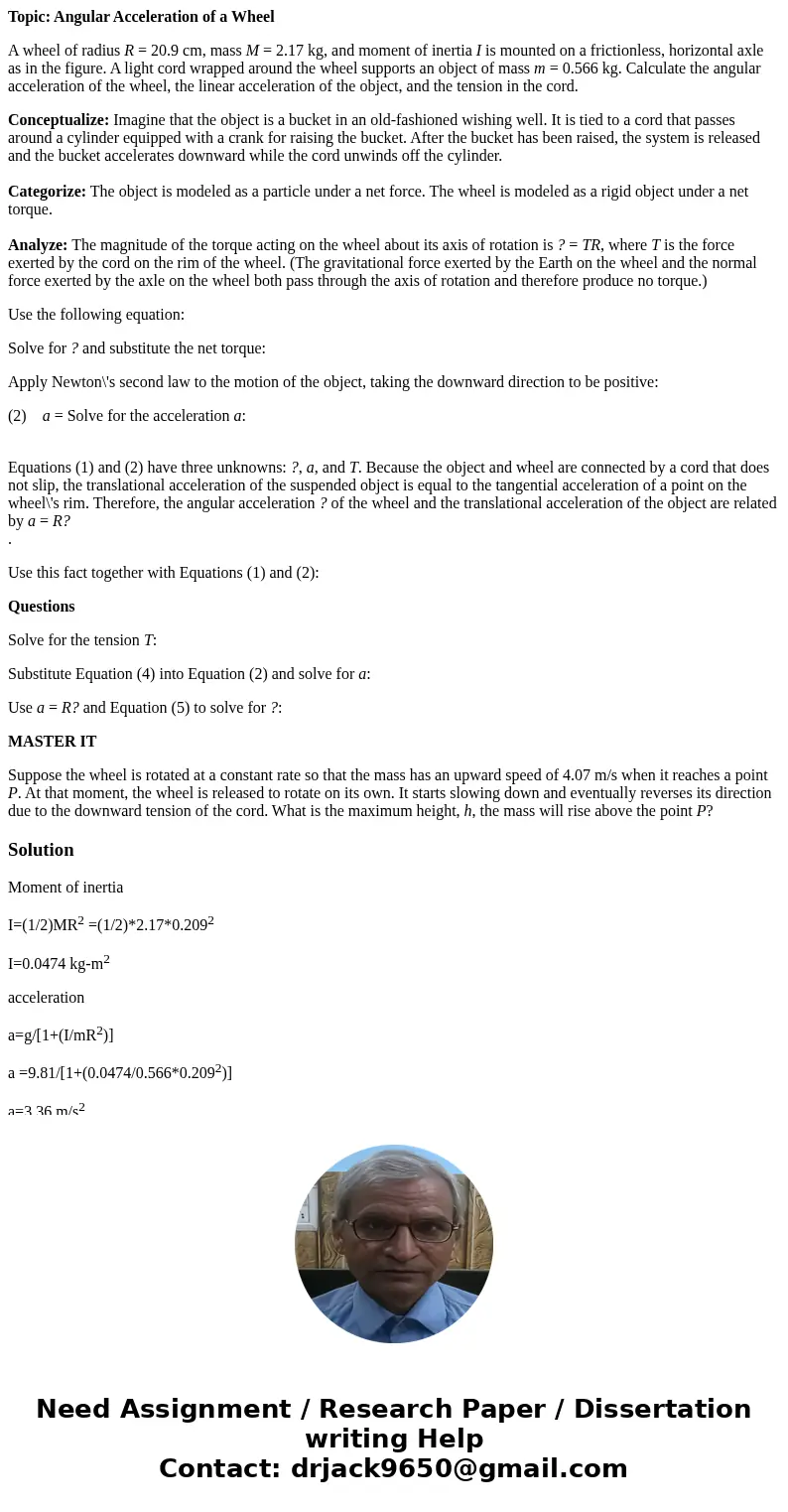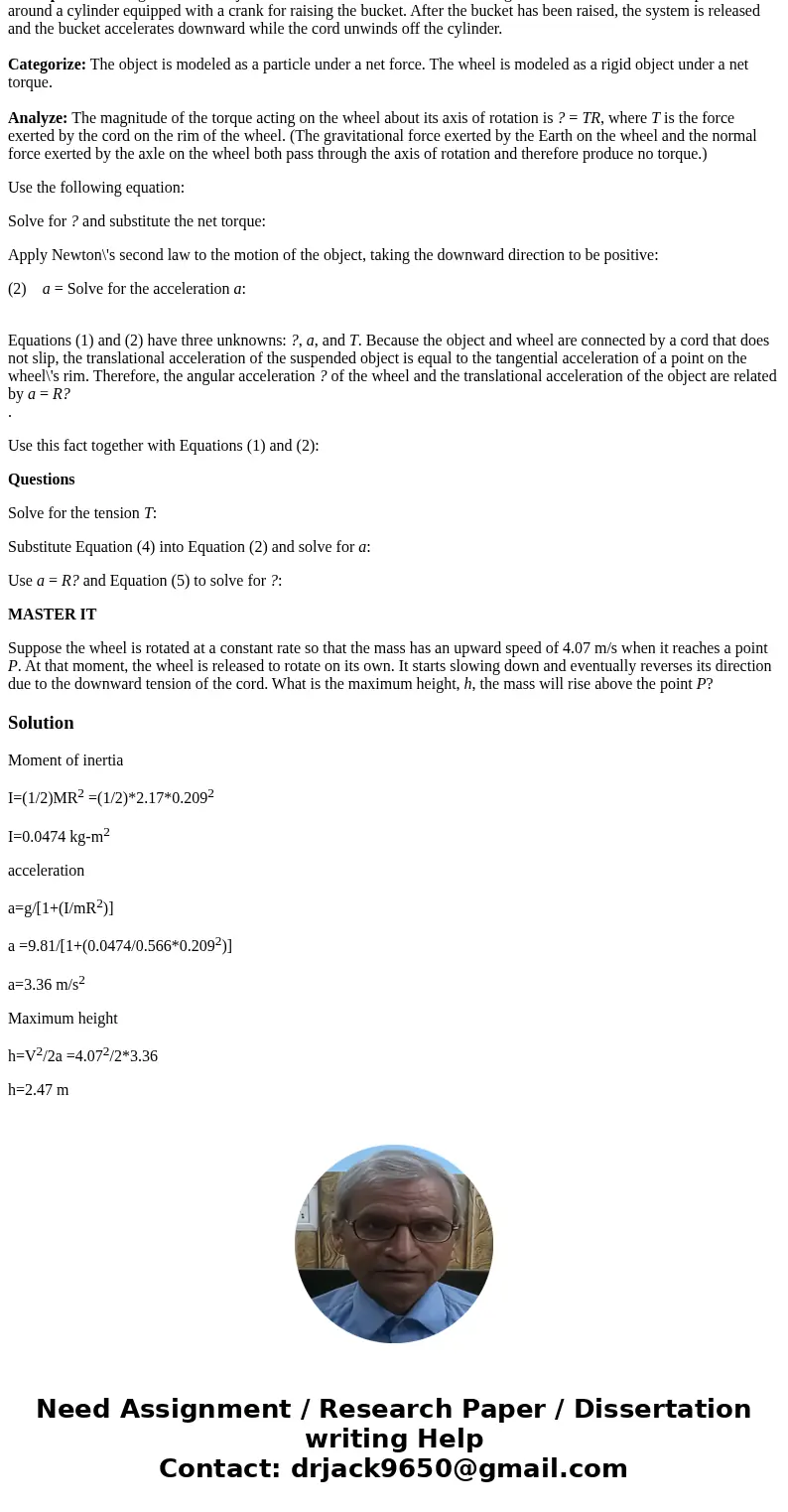Topic Angular Acceleration of a Wheel A wheel of radius R 2
Topic: Angular Acceleration of a Wheel
A wheel of radius R = 20.9 cm, mass M = 2.17 kg, and moment of inertia I is mounted on a frictionless, horizontal axle as in the figure. A light cord wrapped around the wheel supports an object of mass m = 0.566 kg. Calculate the angular acceleration of the wheel, the linear acceleration of the object, and the tension in the cord.
Conceptualize: Imagine that the object is a bucket in an old-fashioned wishing well. It is tied to a cord that passes around a cylinder equipped with a crank for raising the bucket. After the bucket has been raised, the system is released and the bucket accelerates downward while the cord unwinds off the cylinder.
Categorize: The object is modeled as a particle under a net force. The wheel is modeled as a rigid object under a net torque.
Analyze: The magnitude of the torque acting on the wheel about its axis of rotation is ? = TR, where T is the force exerted by the cord on the rim of the wheel. (The gravitational force exerted by the Earth on the wheel and the normal force exerted by the axle on the wheel both pass through the axis of rotation and therefore produce no torque.)
Use the following equation:
Solve for ? and substitute the net torque:
Apply Newton\'s second law to the motion of the object, taking the downward direction to be positive:
(2) a = Solve for the acceleration a:
Equations (1) and (2) have three unknowns: ?, a, and T. Because the object and wheel are connected by a cord that does not slip, the translational acceleration of the suspended object is equal to the tangential acceleration of a point on the wheel\'s rim. Therefore, the angular acceleration ? of the wheel and the translational acceleration of the object are related by a = R?
.
Use this fact together with Equations (1) and (2):
Questions
Solve for the tension T:
Substitute Equation (4) into Equation (2) and solve for a:
Use a = R? and Equation (5) to solve for ?:
MASTER IT
Suppose the wheel is rotated at a constant rate so that the mass has an upward speed of 4.07 m/s when it reaches a point P. At that moment, the wheel is released to rotate on its own. It starts slowing down and eventually reverses its direction due to the downward tension of the cord. What is the maximum height, h, the mass will rise above the point P?
Solution
Moment of inertia
I=(1/2)MR2 =(1/2)*2.17*0.2092
I=0.0474 kg-m2
acceleration
a=g/[1+(I/mR2)]
a =9.81/[1+(0.0474/0.566*0.2092)]
a=3.36 m/s2
Maximum height
h=V2/2a =4.072/2*3.36
h=2.47 m


 Homework Sourse
Homework Sourse